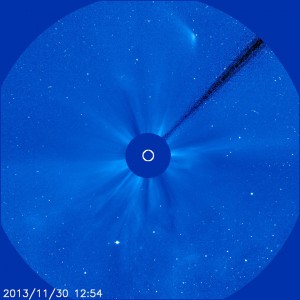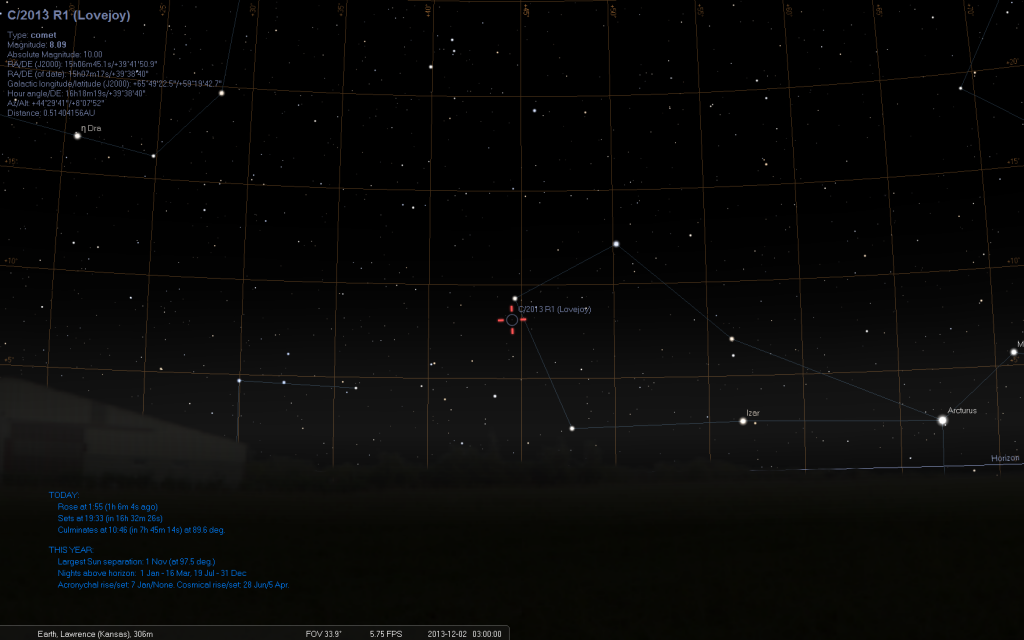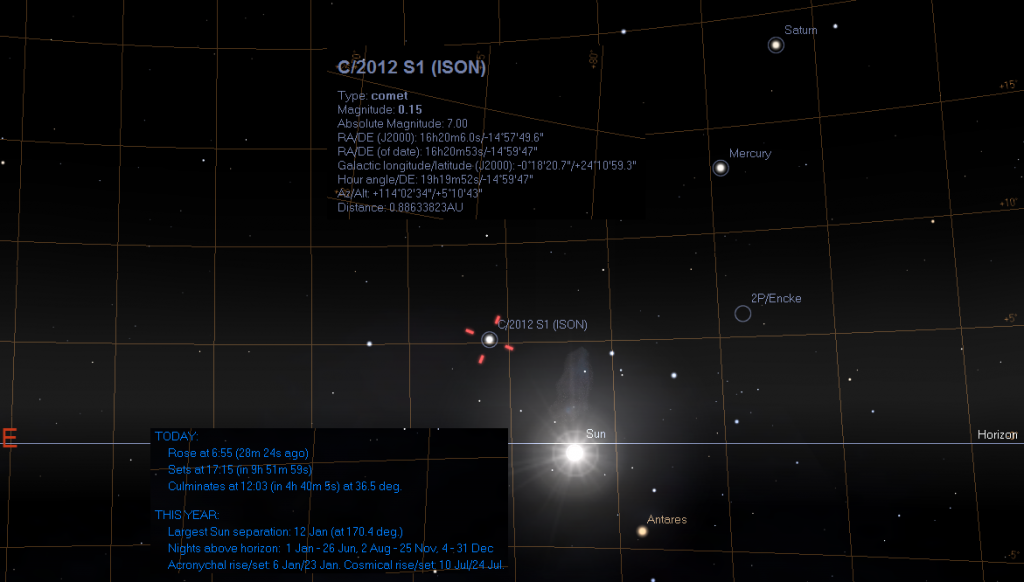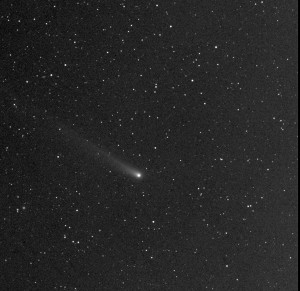We held out hope that Comet ISON not only made it around the Sun intact but that it would offer a spectacular December view. Much to everyone's dismay it now appears that Comet ISON has finally met the end.
The Comet was once thought to be lost on Thanksgiving Day as it passed very close to the Sun only to come into view gain and brighten as it went. This left hope that the comet might be able to make a showing for eager observers throughout the world. As of this morning, it now looks like the comet has gone complete dim and may have completely disintegrated.
My attempt at observing the comet early the morning of November 30th and December 1st were both uneventful and given that reports currently put the comet beyond naked-eye magnitude (6.5+) it is unlikely that much of this comet remains.
The view from the SOHO satellite shows it passing through a jet of material ejected from the Sun and beginning to fade substantially after that. The image below is courtesy of NASA/ESA/SOHO. As you can see in the upper right corner of the picture, the fuzzy smudge is what remains of Comet ISON.
In the event that something changes, I'll be sure to send out another update with that new information. Beyond that, this will be the final update on Comet ISON.
It should be noted that if you have a set of binoculars or telescope there are still a few comets strolling through that are still visible. The main one being Comet Lovejoy which is still visible with off the handle of The Big Dipper (Ursa Major) near the top of the constellation Bootes starting at around 3:00 AM. Comet Lovejoy should be visible approximately 1 degree lower in the sky than the star Nekkar which is the top star in Bootes.
Below is a sky chart which may provide helpful information on locating Comet Lovejoy the morning of December 2nd at the time it rises.




